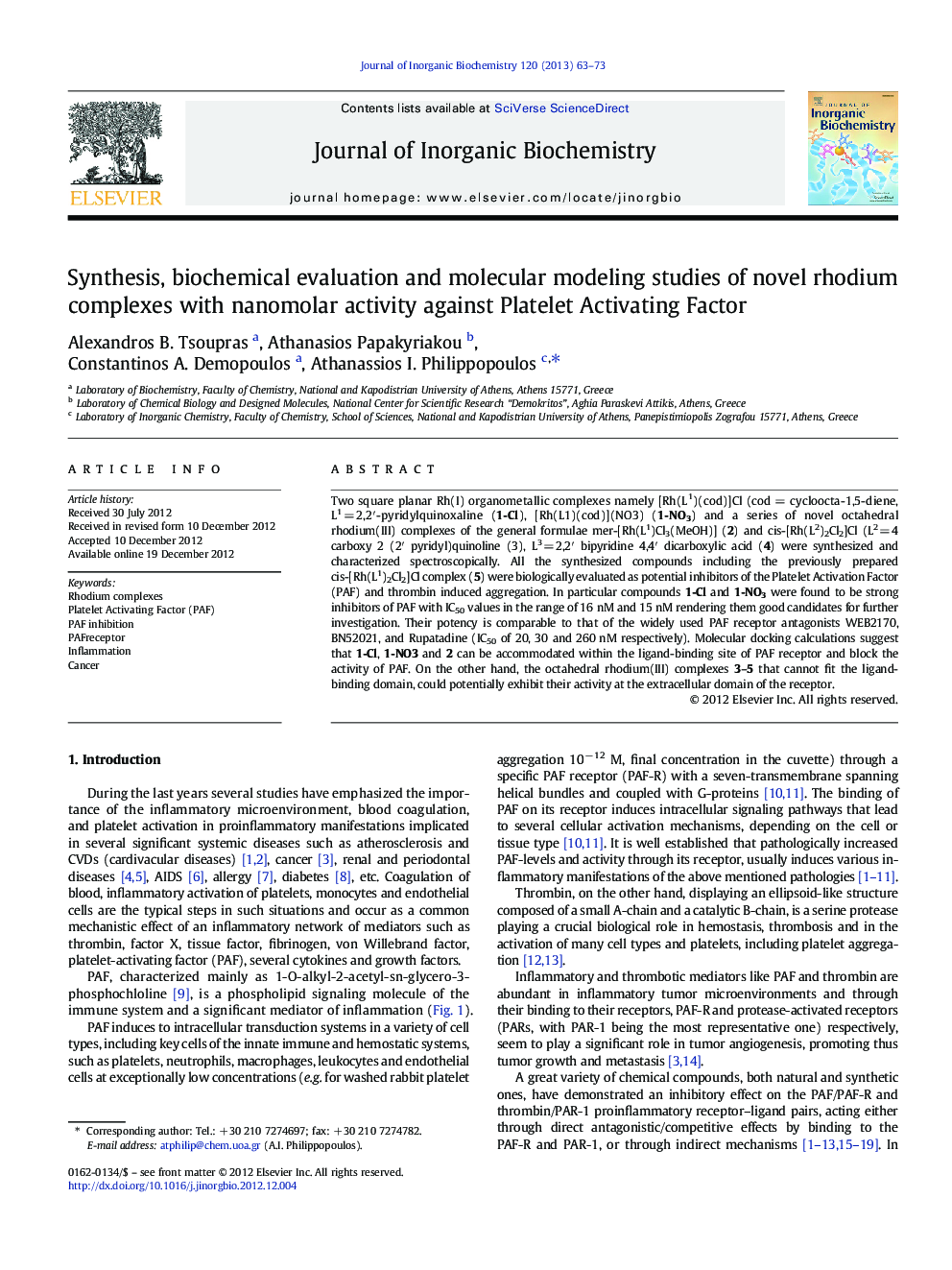| کد مقاله | کد نشریه | سال انتشار | مقاله انگلیسی | نسخه تمام متن |
|---|---|---|---|---|
| 1317679 | 1499467 | 2013 | 11 صفحه PDF | دانلود رایگان |

Two square planar Rh(I) organometallic complexes namely [Rh(L1)(cod)]Cl (cod = cycloocta-1,5-diene, L1 = 2,2′-pyridylquinoxaline (1-Cl), [Rh(L1)(cod)](NO3) (1-NO3) and a series of novel octahedral rhodium(III) complexes of the general formulae mer-[Rh(L1)Cl3(MeOH)] (2) and cis-[Rh(L2)2Cl2]Cl (L2 = 4 carboxy 2 (2′ pyridyl)quinoline (3), L3 = 2,2′ bipyridine 4,4′ dicarboxylic acid (4) were synthesized and characterized spectroscopically. All the synthesized compounds including the previously prepared cis-[Rh(L1)2Cl2]Cl complex (5) were biologically evaluated as potential inhibitors of the Platelet Activation Factor (PAF) and thrombin induced aggregation. In particular compounds 1-Cl and 1-NO3 were found to be strong inhibitors of PAF with IC50 values in the range of 16 nM and 15 nM rendering them good candidates for further investigation. Their potency is comparable to that of the widely used PAF receptor antagonists WEB2170, BN52021, and Rupatadine (IC50 of 20, 30 and 260 nM respectively). Molecular docking calculations suggest that 1-Cl, 1-NO3 and 2 can be accommodated within the ligand-binding site of PAF receptor and block the activity of PAF. On the other hand, the octahedral rhodium(III) complexes 3–5 that cannot fit the ligand-binding domain, could potentially exhibit their activity at the extracellular domain of the receptor.
The square planar Rh(I) organometallic complexes [Rh(L1)(cod)]Cl (1-Cl) and [Rh(L1)(cod)](NO3) (1-NO3) (L1 = 2-(2′-pyridyl)quinoxaline, cod = cycloocta-1,5-diene) are potent inhibitors of the PAF-induced (PAF = 1-O-alkyl-2-acetyl-sn-glycero-3-phosphochloline) aggregation in nanomolar concentrations with IC50 of 16 nM and 15 nM. Molecular modeling calculations revealed that 1-Cl and 1-NO3 can fit tightly at the ligand-binding site of PAF receptor.Figure optionsDownload as PowerPoint slideHighlights
► New square planar organometallic Rh(I) complexes and octahedral Rh(III) coordination complexes have been synthesized.
► The Rh(I) complexes 1-Cl and 1-NO3 are potential inhibitors of PAF (IC50 = 16 nM and 15 nM).
► Molecular modeling experiments support our experimental findings.
Journal: Journal of Inorganic Biochemistry - Volume 120, March 2013, Pages 63–73